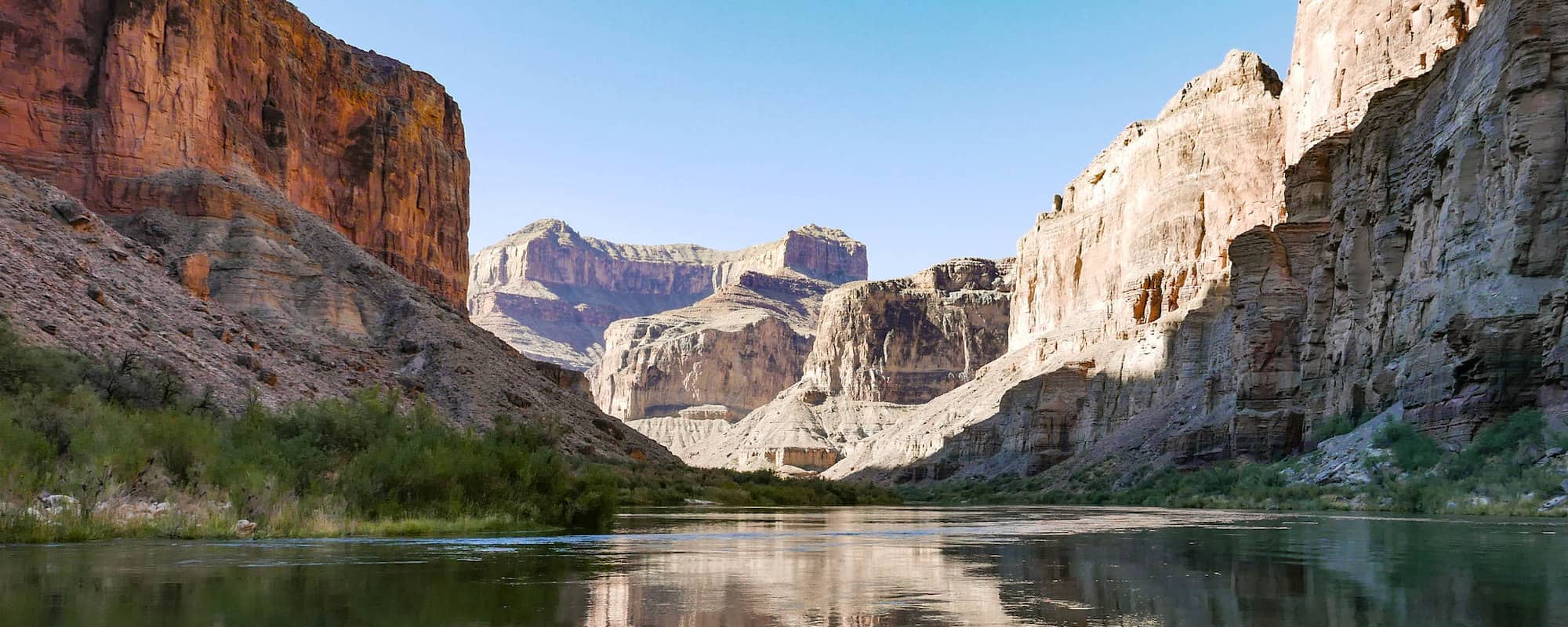This semester, The Traveling School’s first outdoor adventure was set on the Colorado River– a three-day canoe trip in the Black Canyon section, just downstream from the Hoover Dam! We worked with our wonderful guides, Mags and Justine, through Prescott College. Before we got on the water, our students replaced their backpacking packs with the river equivalent “dry bags.” They loaded their gear in these waterproof monstrosities and learned to seal them up to keep all the moisture out! We took a drive from the Prescott area to the Willow Beach put-in, and spent our first day unrigging the canoes, learning our J-strokes from our C-strokes, and loading up our canoes with tight rope-work so that nothing could get loose.
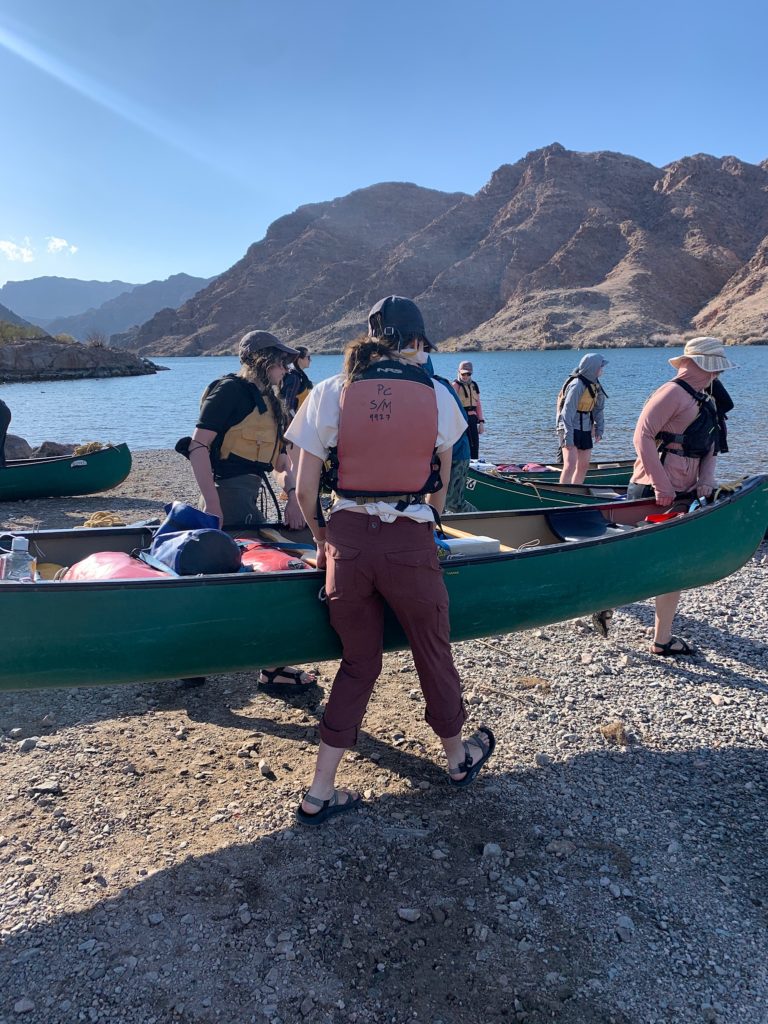
We canoed upstream to our first campsite. This was many students’ first night sleeping under the stars: they learned some handy knots in order to put up their tarps, how to stay warm in the backcountry, and how to organize a backcountry kitchen. We huddled around the warm fire and waited for the full moon to illuminate the sky. They didn’t even need their headlamps!
Our second day on the water was a breeeeeeeeeze, and by that I mean seven miles paddling against the breeze; also known as the evil, not-to-be-named, W-word. We had some sweet time on the water, lounging during breaks and soaking up the sun.

No complaints were heard, just all power with the humble hot springs as the main motivation to push through our long day. We made a sunrise morning trip up to the hot mineral water, maneuvering through little slots and falling water. A beautiful, peaceful start to the morning. For most of our third day, we had our good friend WIND at our backs, and we hustled downstream to set us up for success on our final morning.
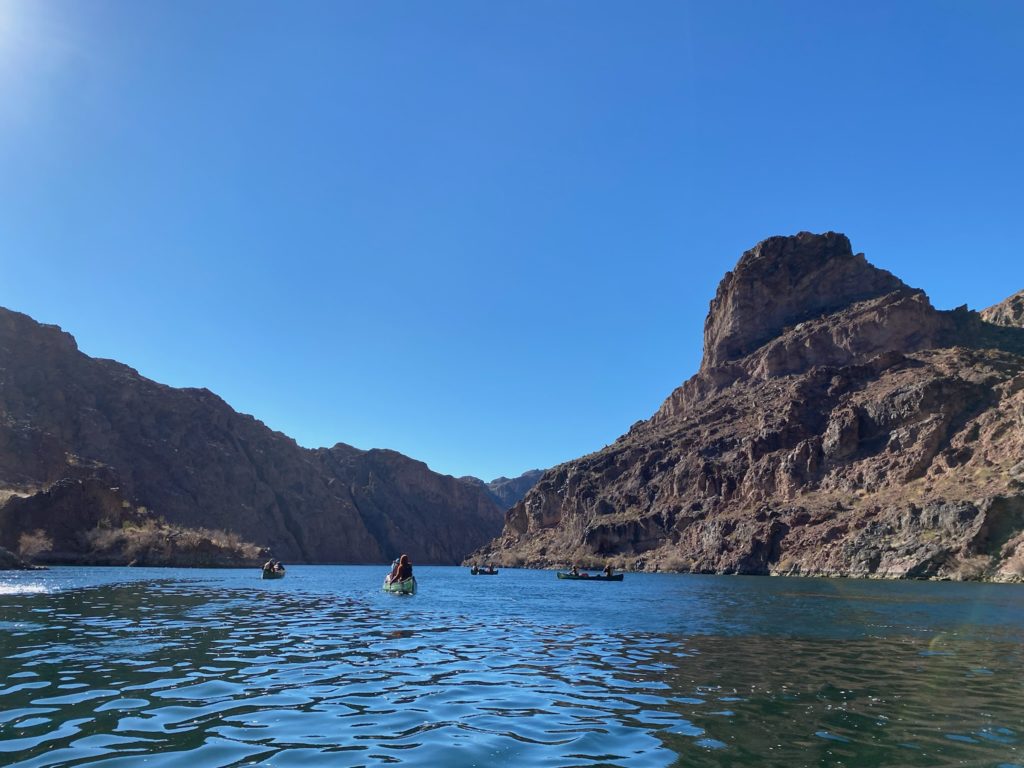
We had a luxurious riverside lunch on a large beach where we found a quick opportunity for science class! Teachers Meredith and Heather took charge to talk about the sundial seen in the image below.
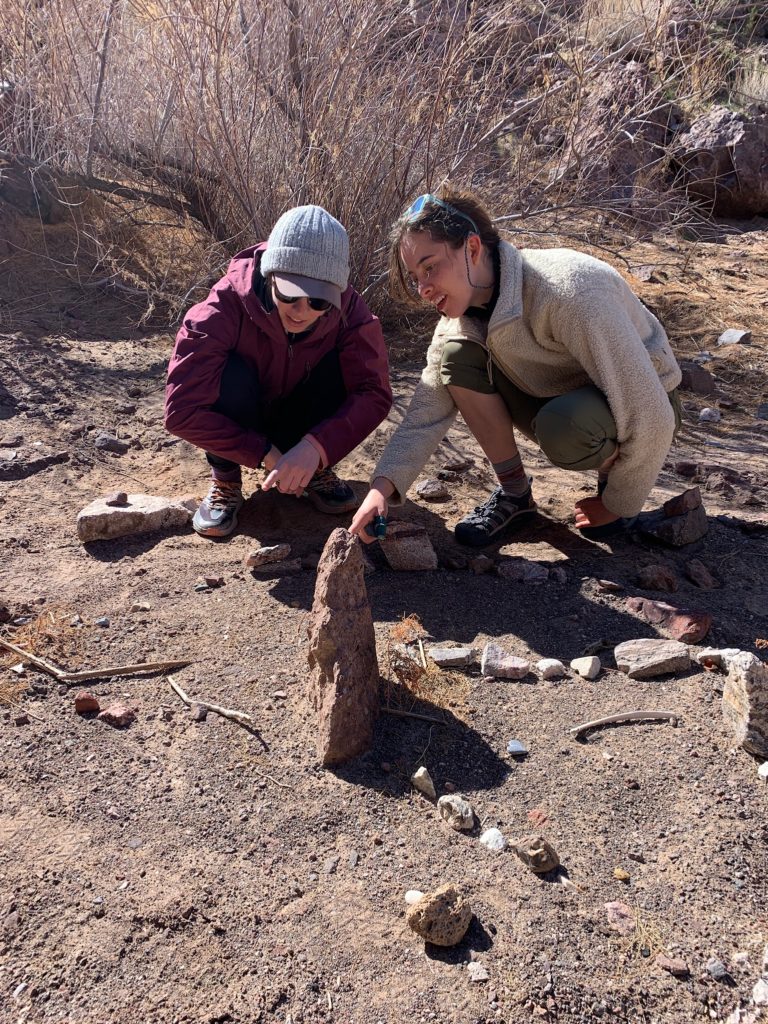
After lunch, students could be found doing good work! Playing capture the flag– canoe style– and chatting with each other and our guides. We made it to our final campsite, waited for the wind to die down, and huddled around the fire into the evening, stargazing and sharing knowledge of the constellations.
Our final morning was quick and efficient! We were off the water in record time and learned how to de-issue and rig our canoes back onto the Prescott College trailer. We said our goodbyes to our guides and thanked them for the work they do with young people like our students. It was a successful, beautiful trip on the Colorado!
After the river, we made our way to southern Arizona, just north of Tucson to stay at Biosphere 2. We had a lovely week staying in their casitas. We caught up on academics and enjoyed the homey space.
We geared up for the big event! Our tour of Biosphere 2 with our guide Leah (a scientist, not our humble history teacher!) We were granted extended access as made our way through the multiple biomes they control in the enclosed setting. Good thing Heather taught us about biomes before we got in there!
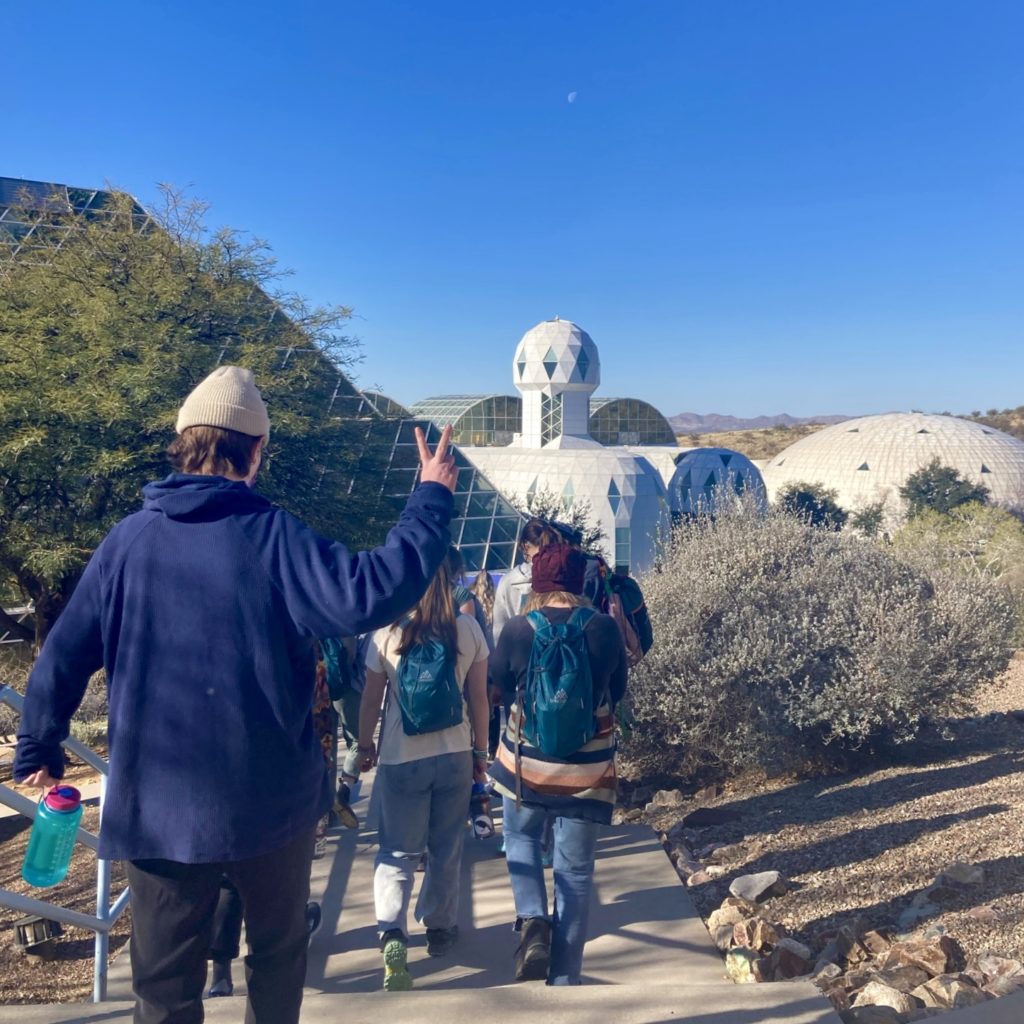
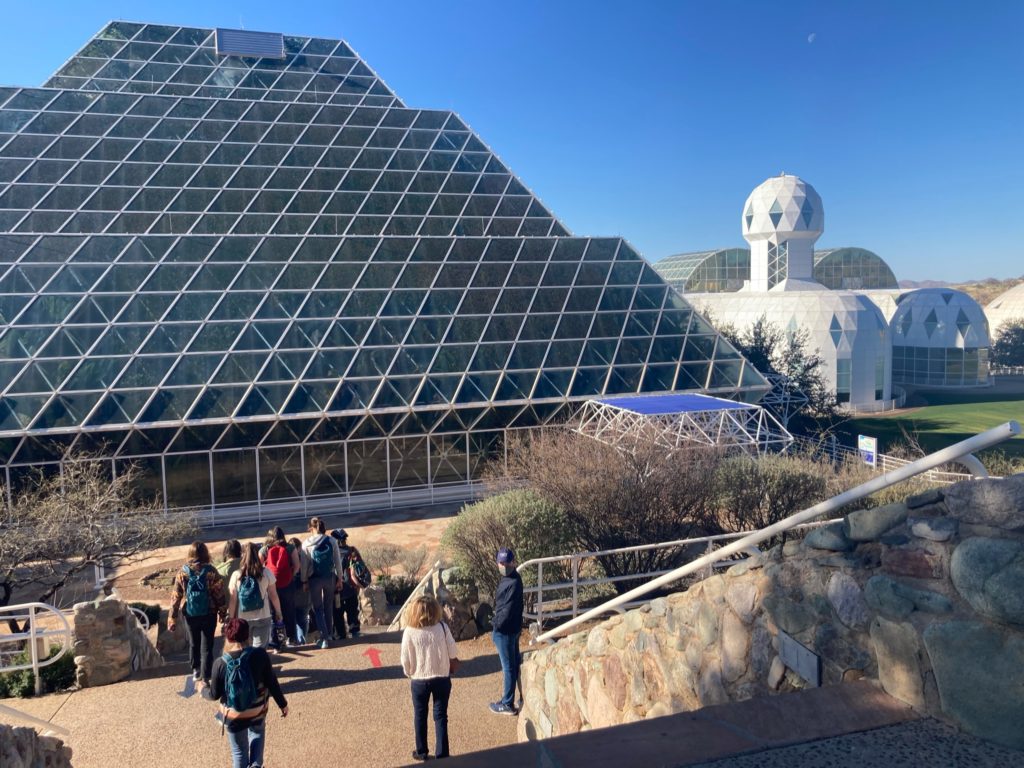
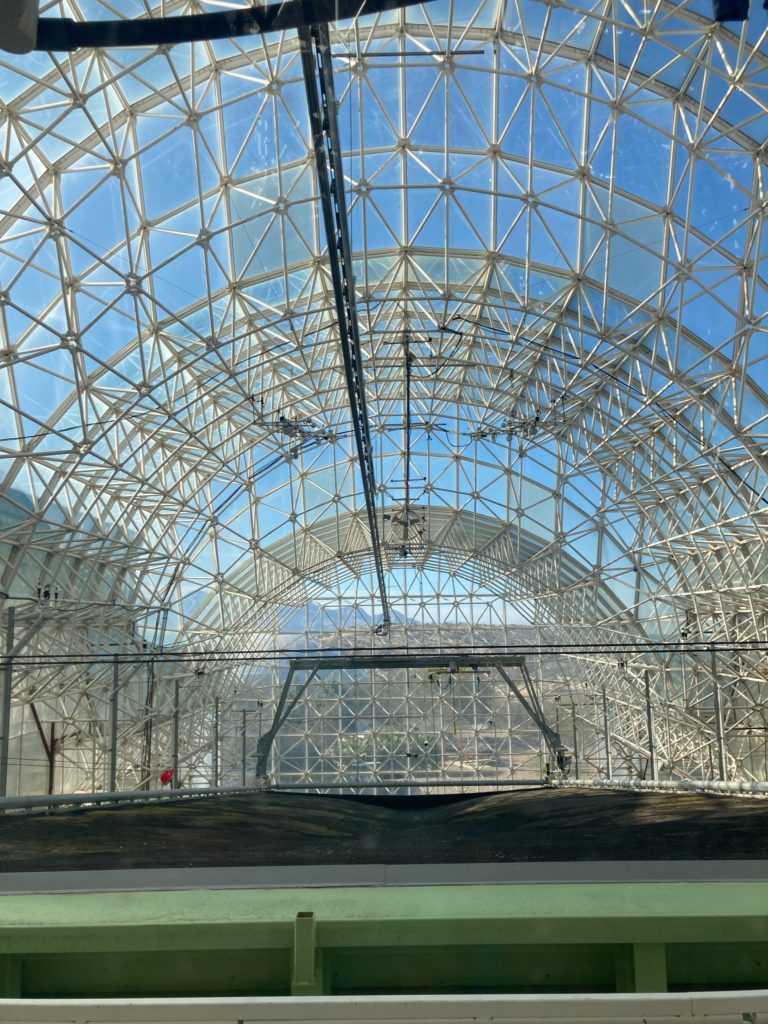
Max (Grade 11) and I were reflecting about our experience in the Biosphere. She gave me permission to share some of what we talked about:
Eileen: How would you describe the Biosphere to people who didn’t know what it was?
Max: The Biosphere is separate from outside elements. Scientists control the biomes within the glass in order to do research on environments and climate change.
Eileen: What is a biome?
Max: A biome an umbrella term for types of climate and terrains. Some examples are deserts, oceans, rainforests, tundra, etc.
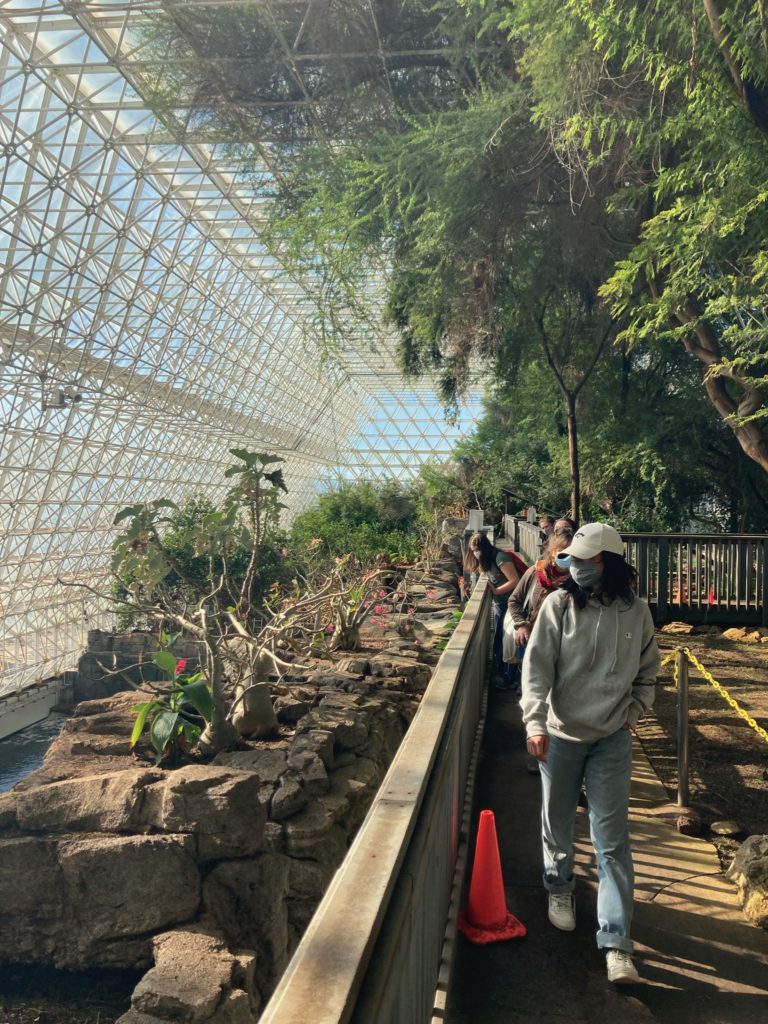
Eileen: What did you learn at the Biosphere?
Max: We learned about the history! A crew of scientists lived in there for two years and a lot of crazy things happened.
Eileen: What is something interesting you thing you learned about the research being done?
Max: We learned about how plants respond to climate change temperatures. And in the ocean they were studying how a rise in ocean acidity kills coral. Our guide Leah is doing research on how to regenerate coral and reintroduce it into the ocean biome.
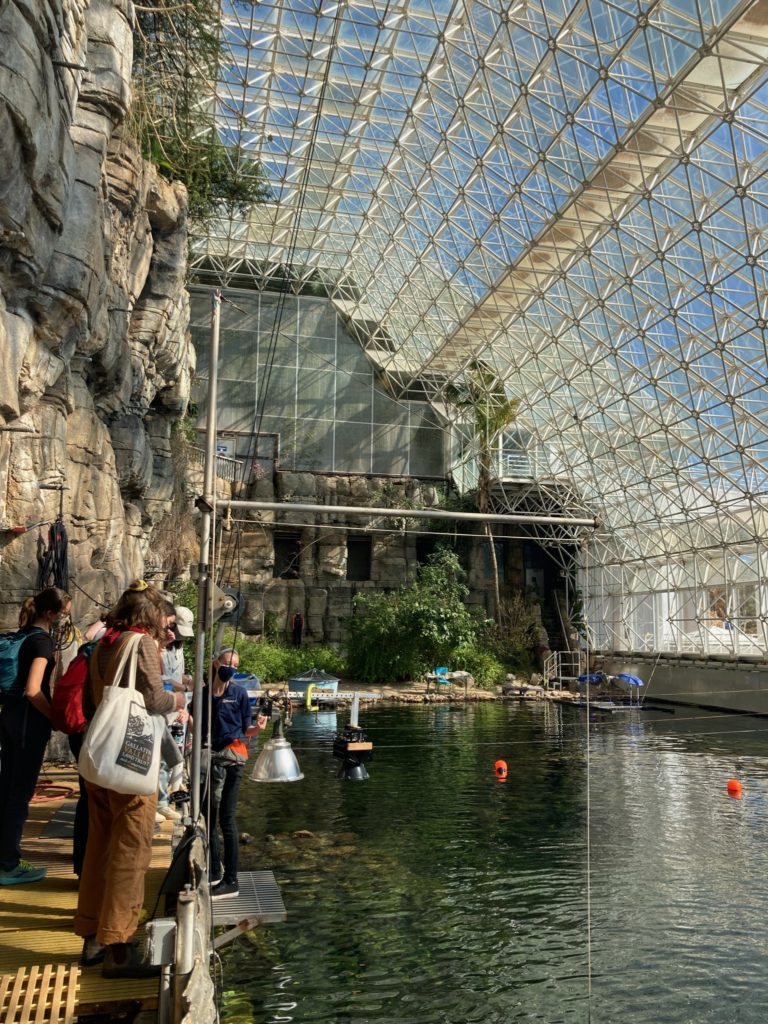
Eileen: Which was your favorite biome?
Max: Surprisingly, the desert was my favorite. It felt the most natural of the biomes and it had many plants I recognized from my own time spent in the desert.
Eileen: What do you want TTS parents to know about our experience?
Max: The experience was sometimes sad because of the focus on climate change research. When we went into the rainforest biome, the temperature was so hot and humid. Leah told us that the temperatures we were experiencing were hotter than normal rainforest temperatures in order to simulate climate change conditions. She pointed out that the smell in there indicated a stress response for the plants.
Eileen: What did it smell like?
Max: Hard to describe, but Leah explained that it was a similar chemical response as grass being cut.
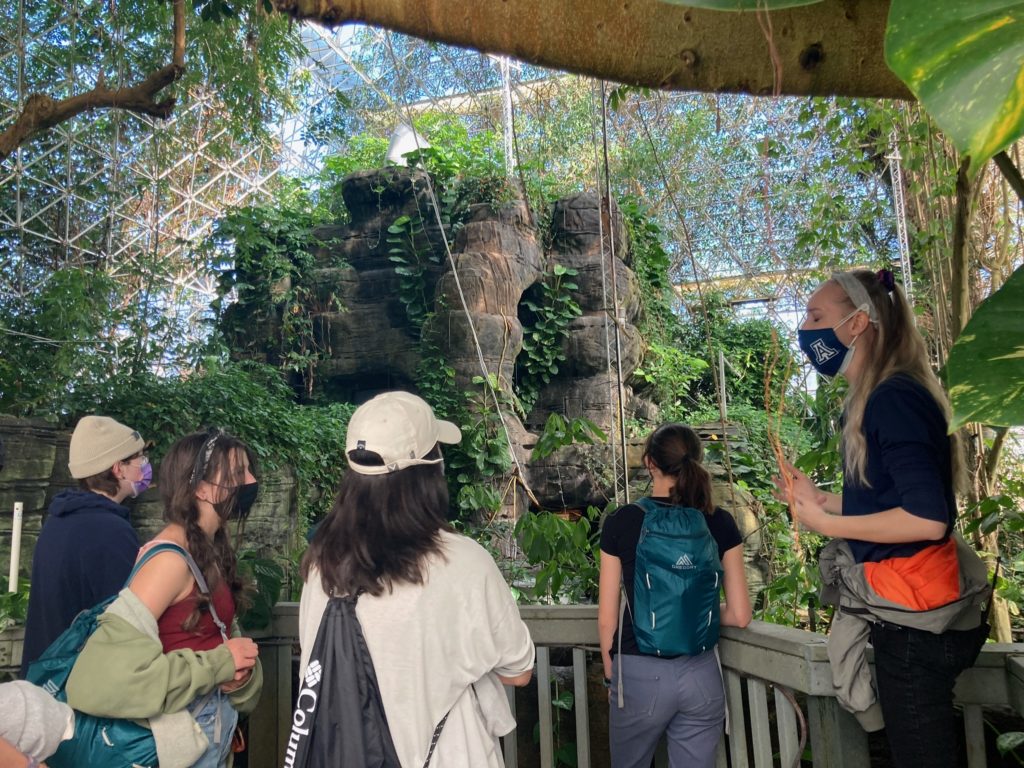
Eileen: Anything else you’d like to share?
Max: Well, even though some of the research they were doing is sad, it’s also really inspiring that they have this space and are using it for really important science. It was such a cool opportunity and pointed us toward opportunities to do good.
Thank you Max!
Our group also got special access to a new biome they are building on the Biosphere 2 campus: Mars. Our new fried Kai gave us a sneak peak into how they are restoring old structures– gutting, cleaning, and refurbishing– in order to prepare for a new wave of extraterrestrial research. In the future, they will bring researchers from all over the world to this space to research human potential to live on Mars. Kai told us he does this research to bring hope to the next generation. Thanks Kai!
We also had a special snowfall at the Biosphere! The students threw snowballs and ran through the small snowy campus.
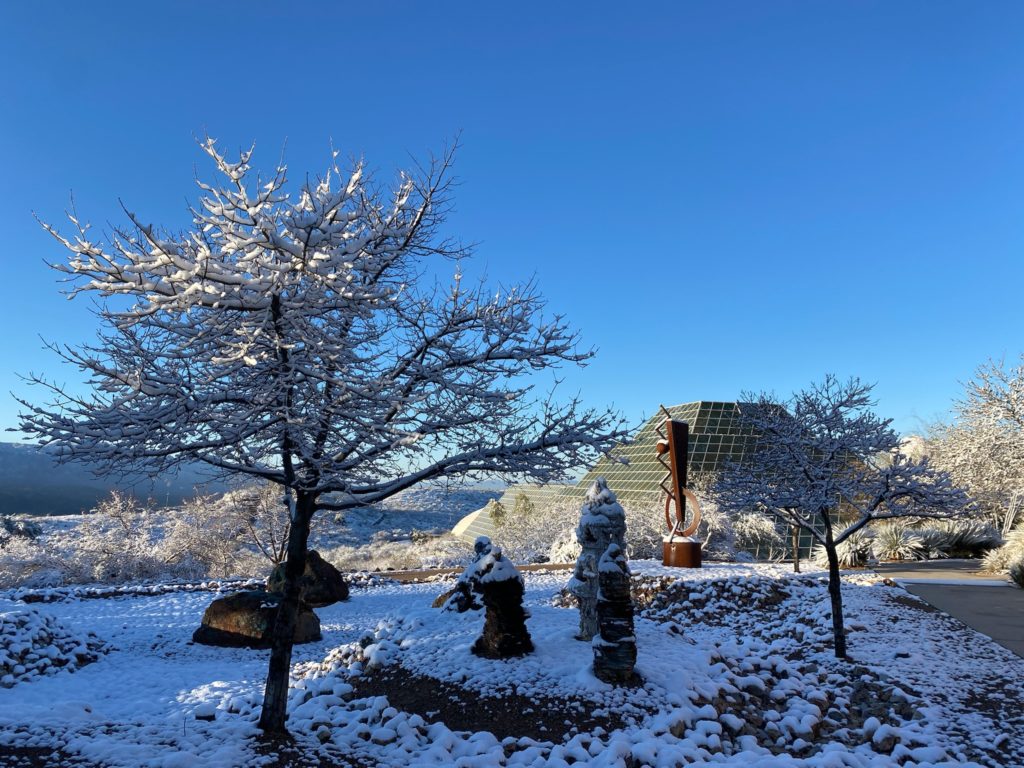
Our TTS students have been granted access to another semester of amazing opportunities. Can’t wait to see what’s next!

